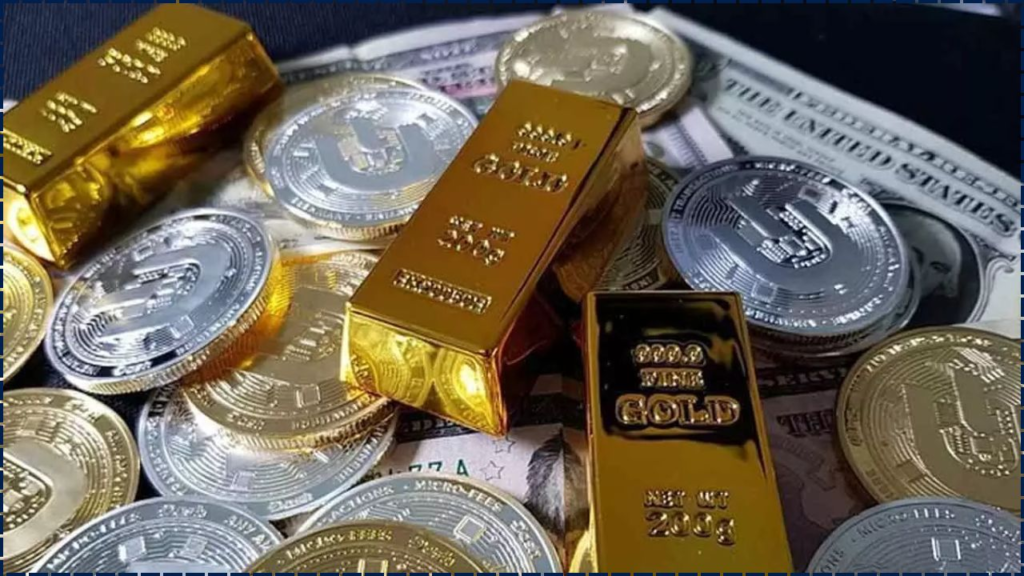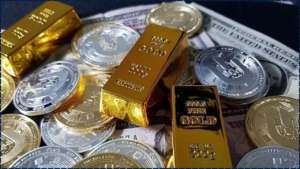Gold and silver prices have experienced significant declines, with both metals falling to historic lows in October 2025. While these drops have raised concerns among some investors, others see this as an opportune moment to purchase 22K and 24K gold. These price movements reflect broader shifts in the global economy, providing both challenges and opportunities in the precious metals market.

Gold and silver prices dropped sharply in mid-October 2025, with gold falling by more than 6% to $4,120 per ounce, and silver experiencing an 8% decrease. While the downturn has raised concerns, many experts believe now is the ideal time to purchase 22K and 24K gold, both for investors seeking safe-haven assets and those looking to diversify their portfolios in uncertain times.
The Price Drop: A Historic Shift in Precious Metals
Gold and silver prices have seen significant declines, with gold experiencing its largest single-day drop in 12 years on October 21, 2025. Gold prices fell by over 6%, while silver also plunged by approximately 8%. These sharp declines follow a year-long rally driven by global economic uncertainty, inflation fears, and geopolitical tensions. However, the price drops reflect a natural market correction, which many analysts believe creates a buying opportunity.
The decline comes after a period of extraordinary growth in the value of precious metals. Global factors such as inflationary concerns, economic instability, and political unrest had driven up the price of gold, peaking at all-time highs in mid-2025. Now, with these concerns beginning to ease, the markets have adjusted accordingly.
Why Buy 22K and 24K Gold Now?
While the current market downturn may seem alarming to some, many experts suggest that it could be the perfect time to invest in 22K and 24K gold. Here are some reasons why:
1. Gold’s Status as a Safe-Haven Asset
Gold has always been viewed as a safe-haven asset, particularly in times of economic or geopolitical turmoil. Despite its recent price drop, gold’s value is still expected to rise in the medium to long term. Historically, gold has performed well during periods of high inflation, economic instability, and currency devaluation. Analysts at the World Gold Council (WGC) argue that gold will continue to play an essential role in portfolios, especially as a hedge against inflation and other market risks.
Gold’s ability to hold its value during times of crisis, combined with the recent price correction, has made it attractive to those looking to safeguard their wealth. In particular, 24K gold, which contains 99.9% pure gold, remains a preferred option for those focused on investment-grade assets.
2. 22K Gold: A Durable Investment for Jewelry and Market Value
22K gold contains 91.6% pure gold, with the remaining 8.4% made up of other metals like copper and silver. This composition provides a balance between purity and durability, making 22K gold an ideal choice for those looking to invest in jewelry or coins while retaining a strong resale value. The durability of 22K gold ensures that it is suitable for frequent use in jewelry, which is highly prized in markets such as India, where 22K gold remains a staple for wedding and festival-related purchases.
In markets like India, 22K gold has cultural significance. During the festival season, particularly in the run-up to Diwali, gold purchases typically spike. This seasonal demand can help support the price of 22K gold, making it an attractive investment for those familiar with these cycles.
3. 24K Gold: The Ultimate Pure Investment
On the other hand, 24K gold is the purest form of gold, comprising 99.9% gold. While its soft nature makes it less practical for everyday jewelry use, it is often preferred by investors seeking to hold gold as a long-term store of wealth. With minimal impurities, 24K gold is ideal for bars, coins, and other forms of investment-grade gold.
24K gold is highly liquid, making it an excellent choice for those who wish to sell or trade their gold quickly. Given its purity and value retention, it remains a preferred choice for serious investors, including central banks and institutional buyers.
4. Timing the Market: Expert Opinions on Gold’s Future
As gold prices have dropped, many investors are wondering whether this is the right time to buy. Dr. Sandeep Mehta, a senior economist at the National Institute of Financial Research, believes that the decline is temporary. “Gold prices have a long history of recovering from market corrections,” he explains. “While the current price drop might seem alarming, it presents a unique opportunity to buy at lower prices before the market rebounds.”
Additionally, Dr. Mehta suggests that investors should consider the broader economic environment. The strength of the U.S. dollar and the relative stability in global markets have contributed to the current decline, but gold’s position as a hedge against inflation is expected to keep demand strong in the long term.
5. Impact of Central Banks on Gold Prices
Another important factor influencing the price of gold is the buying behavior of central banks. The Reserve Bank of India, the People’s Bank of China, and other central banks around the world have continued to increase their gold reserves in recent years. This demand for gold, particularly from central banks, can help stabilize prices and provide upward pressure when market conditions improve.
The Federal Reserve’s policies on interest rates also have a significant impact on gold prices. When central banks lower interest rates or engage in quantitative easing, gold often benefits as a non-interest-bearing asset. As central banks around the world recalibrate their policies, their actions will continue to affect gold prices, adding a layer of complexity to the market.
6. The Role of Technological Demand in Gold Prices
Technological advancements are also playing a role in the demand for gold. Industries such as electronics, renewable energy, and medical devices have increasingly relied on gold in their production processes. Gold is a critical component in the manufacturing of semiconductors, solar panels, and medical devices, ensuring its continued demand.
This growing technological demand, combined with traditional uses for gold in jewelry and investment, ensures that the metal remains in high demand across a variety of sectors. As new technologies emerge, the demand for gold may continue to rise, providing long-term value for investors.
7. Gold and Silver as a Diversified Asset Class
Gold and silver offer effective portfolio diversification strategies, especially for those seeking to protect wealth during times of market volatility. Unlike stocks and bonds, which can be highly volatile, precious metals like gold and silver tend to maintain their value over time. As such, investors looking to reduce risk and provide stability to their portfolios often turn to precious metals.
Silver, in particular, offers a more affordable alternative to gold. Although it is often more volatile than gold, silver has historically mirrored the movements of gold, offering investors an opportunity to benefit from a more affordable entry point into precious metals.
8. Alternative Ways to Invest in Gold
While purchasing physical gold is a popular option, there are other ways to invest in gold. Exchange-Traded Funds (ETFs), for example, allow investors to gain exposure to gold without the need to purchase and store physical assets. Similarly, gold mining stocks provide a way to invest in the gold market indirectly by gaining exposure to companies involved in the mining and production of gold.
Digital gold platforms, where investors can buy and sell gold online, have also grown in popularity. These platforms offer the convenience of investing in gold without the need for physical storage, appealing to a younger, tech-savvy audience.
Minimum Balance Limits Set for SBI, PNB, and HDFC Customers – Check Details
Conclusion
The recent decline in gold and silver prices presents an attractive buying opportunity for investors looking to purchase 22K and 24K gold. With the global economic landscape shifting and the price of gold at a lower point, now may be the ideal time to invest. Whether for portfolio diversification, wealth preservation, or cultural reasons, both 22K and 24K gold offer distinct advantages. As experts suggest, this correction could be temporary, making it an opportune moment to enter the market.
















